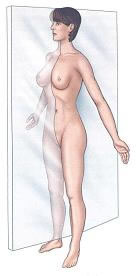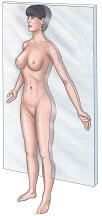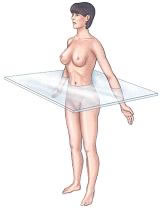Anatomical Planes
a) Sectional Plans: four plans are fundamental:
1) Median Plane: vertical plane that runs longitudinally through the body, dividing it into right and left halves. Parasagittal, used by neuroanatomists and neurologists, is unnecessary because any plane parallel to the midplane is sagittal by definition. A near median plane is a Paramedian plane.

2) Sagittal Planes: they are vertical planes that pass through the body, parallel to the median plane.

3) Front Planes (Coronal): are vertical planes that pass through the body at right angles to the median plane, dividing it into anterior (front) and posterior (back) parts.

4) Transverse Planes (Horizontal): they are planes that pass through the body at right angles to the coronal and median planes. Divides the body into upper and lower parts.

